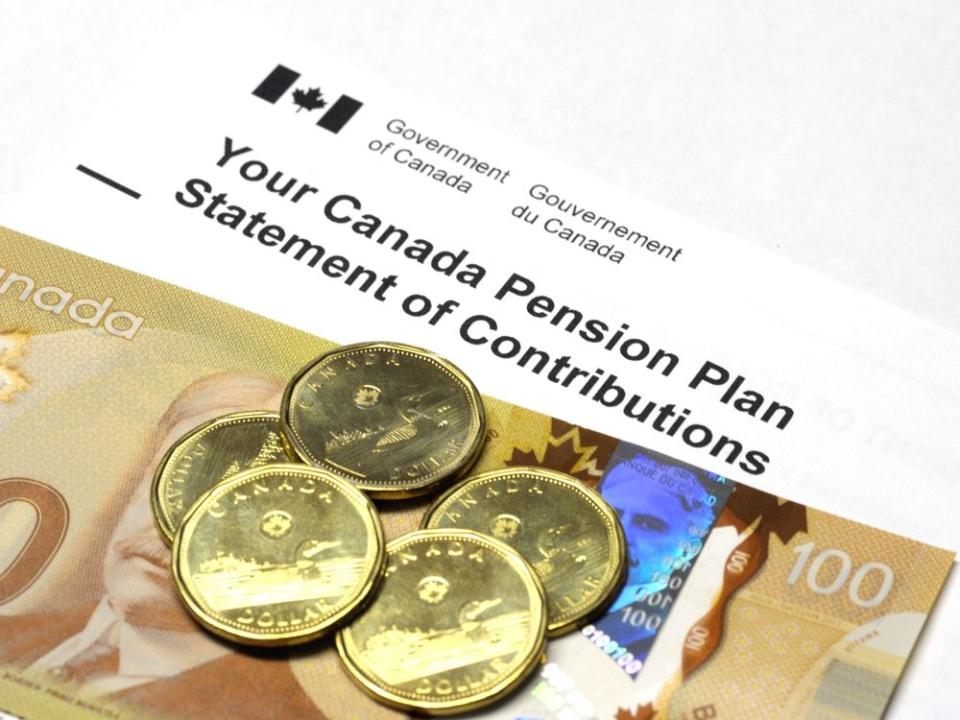
There’s no shortage of financial advice for Canadians to decipher, whether it’s from financial professionals, social media influencers, or well-meaning siblings. Some of it is good, some of it is biased, and some of it is flat out wrong. Here are the four biggest myths I come across in the world of personal finance.
Dividends
Many investors and advisors focus on dividend-paying stocks. It is important to understand how dividends work. When a company makes a profit, the board of directors can declare a dividend and pay a portion of that profit to investors. Many companies pay consistent dividends each quarter because they have stable businesses that are profitable but may have limited growth potential. Limited growth potential means they can only put so much money into their business that they can also pay out a portion of their profits to investors as dividends.
In comparison, another company in growth mode may choose to retain its profits and use them to grow its business, make it more profitable, and increase its stock price. They can also pay dividends, and once they grow, they can reach a point where they start raising their dividends if they can’t reinvest all of their profits into further growth.
Imagine you own a $100 stock that earns five percent. It can pay $5 as a dividend or it can keep that $5 to grow the business. If it pays you a $5 dividend, you have $100 and $5 cash in the stock, or a total of $105.
Now imagine another $100 stock earning the same five percent return. Instead, the board of directors feels they can further increase their profits by keeping the $5 profit and reinvesting it. If that $5 stays in the business, the stock could be worth $105.

This is an oversimplified example, but the point is that dividends are not magic. Two companies that are equally profitable can provide investors with similar total returns over the long term. One can do it with dividends, the other with capital growth. But it is less likely that a company can pay a high dividend and also grow as much as a company that reinvests as its stock price increases.
High dividend stocks in Canada tend to be in a few sectors, such as banks, telecommunications companies and utilities. Financials, communications services and utilities make up less than a quarter of the S&P 500, which gives you an idea of how indifferent a Canadian dividend portfolio can be to an investor.
There are far worse investment options than a portfolio of Canadian banks. But the thing is, dividends may not be as special as they are made out to be. And in a taxable investment account, they are taxed at a higher rate than the tax paid on capital gains from stock price appreciation, and result in an annual tax instead of a tax-deferred capital gain.
Stocks are risky
To say that stocks are risky is an understatement. It is like saying that ice is cold. Over time, ice melts and turns into water. When it boils, the water becomes hot.
Short-term stocks can be risky. The S&P 500 has lost money about 25 percent of the time in a year since 1926. Every day, the S&P 500 is down roughly 44 percent. Over five years, the S&P 500 has had positive returns 88 percent of the time. An investor with a diversified portfolio of US stocks, Canadian stocks, international stocks and bonds will reduce the risk of losing more money in the medium and certainly the long term.
Stocks can be riskier depending on how you buy them. If you invest all your money in a junior oil fund, there is a greater chance that your investment will boom or bust. An undiversified portfolio can be very risky. If you own 20 or more stocks from different sectors or geographies, either directly or through an exchange-traded fund or mutual fund, your risk is dramatically reduced.
Over the long term, stocks can be a great way to grow wealth and avoid the risk of inflation eroding your purchasing power and forcing you to outlive your savings.
CPP will not be there so apply early
The Canada Pension Plan provides retirement pensions for contributors who can start their pensions between the ages of 60 and 70. Some people believe that CPP will not be sustainable and this may affect them starting their pension early.
The 2023 annual report of the U.S. CPP, the Social Security Equivalent Board of Trustees, warned that funds could run out by 2034 and called for a 20 percent cut in benefits paid to retirees without Congressional intervention.
The CPP is administered by the Canada Pension Plan Investment Board, a crown corporation that holds CPP funds from investors to pay pensions. The Actuary General of Canada produces an independent triennial report on the CPP and recently said it should be sustainable for the next 75 years.

The 2019-2020 fiscal year report stated that “the ratio of assets to next year’s expenses is expected to increase rapidly until 2025, then decline thereafter, reaching a level of about 26 by 2075 and remaining at that level until 2095. “. That means the money in the CPP fund is projected to be more than 26 times what will be withdrawn next year by the time today’s 25-year-olds turn 100.
I’ve written a lot about the benefits of deferring CPP, because it grows every year you delay starting it, just like deferring money from an investment account. A recipient would need to live into their mid-80s to receive more income over their lifetime, even after adjusting for the time value of money, than if they started earlier. With 50 percent of 65-year-olds expected to live to age 90, most retirees should delay their CPP, but only four percent of women and five percent of men chose to delay their CPP until age 70 in 2022.
CPP applicants may have their reasons for applying early, but it certainly shouldn’t be because they fear the pension could dry up.
Always maximize your RRSP
If your income is below $50,000, you probably shouldn’t contribute to a Registered Retirement Savings Plan (RRSP). That is, unless you have an employer that matches the contributions. The higher your income is above $50,000, the more beneficial the RRSP contribution becomes.
Some people think you should contribute to an RRSP because it gives you a tax refund and saves you tax. It is not true. An RRSP contribution is tax-deferred. It defers tax on your investment today and you get tax back on your withdrawals in the future. No later than age 72, you should start withdrawing money from your RRSP. When you die, your remaining RRSP balance is fully taxable. If you leave your RRSP to your spouse, it can be tax-deferred until they die.
If you contribute to your RRSP when you’re in the lower 20 percent tax bracket and earn less than $50,000 in income, imagine you contribute $10,000. You save $2,000 in taxes and put that money back into your tax-free savings account (TFSA). You invest $12,000 between two accounts for 10 years at four percent. After 10 years, the RRSP is worth $14,802 and the TFSA is worth $2,960. If you’re still in the 20 percent tax bracket and withdraw the full amount from your RRSP, it’s only $11,842 after taxes. And the TFSA withdrawal is tax-free, so it’s still $2,960. That’s a total of $14,802 that can be withdrawn from both accounts.
If you instead put the entire $10,000 into your TFSA, it would grow to $14,802 over 10 years at four percent. You can withdraw the same $14,802 as the combined RRSP/TFSA example. The problem? Most people spend their tax refund from their RRSP contribution. If you do, it leaves you worse off compared to putting the same amount into your TFSA (or paying off debt instead).
Furthermore, some retirees end up in higher tax brackets in retirement when they were in the lowest tax bracket during their working years. Especially when you consider the means-tested benefits they could get if they took TFSA withdrawals instead of taxable RRSP withdrawals. And in the case of a couple, if one spouse dies young, the survivor has all the income on one tax return, and RRSP withdrawals can be taxed at a higher rate than the tax withheld on the investment. If both spouses die young, RRSPs can be taxed at more than 50 percent of the estate.
Summary:
Beware of these personal finance myths, some of which may be perpetuated by professionals, let alone others. The more you can develop your knowledge and try to apply it to your situation, the better financial decisions you will be able to make.
Jason Heath is a fee-only, consultation-only Certified Financial Planner (CFP) Objective Financial Partners Inc. in Toronto. He does not sell any financial products. He can be reached jheath@objectivecfp.com.
[ad_2]
